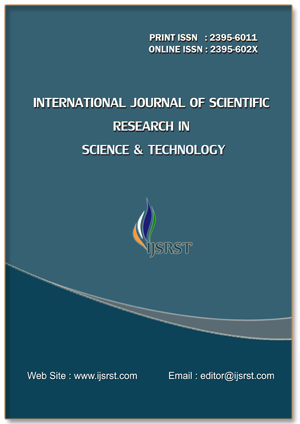Green Fingerprints: Unveiling Latent Fingerprints Using Commercial Shikakai Powder
DOI:
https://doi.org/10.32628/IJSRST251222641Keywords:
Commercial Shikakai powder, Cost effective, Latent fingerprint, Powder dusting method, White fingerprint powderAbstract
Latent fingerprint plays an important role in forensic science as it helps in personal identification. These latent prints are trace evidences found in crime scenes which are developed and visualized using various developing methods; the one such common method of developing latent fingerprint is the powder dusting method. In this study, commercially available shikakai (Acacia concinna) powder, a naturally occurring plant-based material which acts as a gentle cleanser for hair, is used to visualize and develop latent fingerprint on various different surfaces. According to the study, the commercial shikakai powder developed latent fingerprints with distinct ridge details i.e., good fingerprint clarity on various non-porous surfaces and are compared with white fingerprint powder. The comparative analysis shows that the latent fingerprints developed using commercial shikakai powder is almost comparable with those developed using white fingerprint powder. .In conclusion, the developed fingerprints using commercial shikakai powder shows sufficient ridge details for fingerprint identification and examination and also shikakai powder's natural makeup depicts its environmentally friendly and cost effective qualities, by making it a potential substitute for forensic purposes.
📊 Article Downloads
References
P. Kumari et al., “Enhancing Latent Fingerprint Development with Buckwheat Flour (Kuttu Aata): Exploring a Promising Natural Material for Forensic Investigations”.
H. Moses, “A critical comparison of black fingerprint powder formulations to improve latent fingerprint clarity and contrast on common substrates - ProQuest.” Accessed: Apr. 14, 2025. [Online]. Available: https://www.proquest.com/openview/fb7e947c13addc0784df5df053d151d6/1?pq-origsite=gscholar&cbl=18750
K. Nigam et al., “Effectiveness of Talcum Powder for Decipherment of Latent Fingerprints on Various Substrates,” Asian J. Chem., vol. 33, no. 1, pp. 120–126, 2021, doi: 10.14233/ajchem.2021.22949.
K. Venkatesh, A. K. Dubey, and B. Sharma*, “Development of Latent Fingerprints Using Food Coloring Agents,” J. Forensic Sci. Res., vol. 8, no. 1, pp. 104–107, Dec. 2024, doi: 10.29328/journal.jfsr.1001070.
R. Vadivel, M. Nirmala, and K. Anbukumaran, “Commonly available, everyday materials as non-conventional powders for the visualization of latent fingerprints,” Forensic Chem., vol. 24, p. 100339, Jun. 2021, doi: 10.1016/j.forc.2021.100339.
P. Thakur and R. K. Garg, “New developing reagent for latent fingermark visualization: Fuller’s earth (Multani Mitti),” Egypt. J. Forensic Sci., vol. 6, no. 4, pp. 449–458, Dec. 2016, doi: 10.1016/j.ejfs.2016.11.007.
I. R, P. Gupta, M. S, and D. R, “A study on development of fingerprint powders using natural sources for latent fingerprint visualization on non-porous surfaces,” Int. J. Forensic Med., vol. 6, no. 1, pp. 49–52, Jan. 2024, doi: 10.33545/27074447.2024.v6.i1a.80.
A. Castelló, F. Francés, and F. Verdú, “Solving underwater crimes: Development of latent prints made on submerged objects,” Sci. Justice, vol. 53, no. 3, pp. 328–331, Sep. 2013, doi: 10.1016/j.scijus.2013.04.002.
B. E. Devlin, “Recovery of Latent Fingerprints after Immersion in Various Aquatic Conditions,” Jan. 2012, Accessed: Apr. 14, 2025. [Online]. Available: https://hdl.handle.net/1920/7484
“Fingerprint Detection and DNA Typing on Objects Recovered from Water - ProQuest.” Accessed: Apr. 14, 2025. [Online]. Available: https://www.proquest.com/openview/6d65c7a5ae142fc46994410a48a72d7e/1?cbl=29772&pq-origsite=gscholar
S. Madkour, Abeer sheta, F. B. El Dine, Y. Elwakeel, and N. AbdAllah, “Development of latent fingerprints on non-porous surfaces recovered from fresh and sea water,” Egypt. J. Forensic Sci., vol. 7, no. 1, p. 3, Jul. 2017, doi: 10.1186/s41935-017-0008-8.
P. Verma et al., “A green approach to fingerprint enhancement: The potential of alternanthera dentata leaf powder,” IP Int. J. Forensic Med. Toxicol. Sci., vol. 9, no. 1, pp. 18–27, doi: 10.18231/j.ijfmts.2024.005.
Downloads
Published
Issue
Section
License
Copyright (c) 2025 International Journal of Scientific Research in Science and Technology

This work is licensed under a Creative Commons Attribution 4.0 International License.
https://creativecommons.org/licenses/by/4.0




